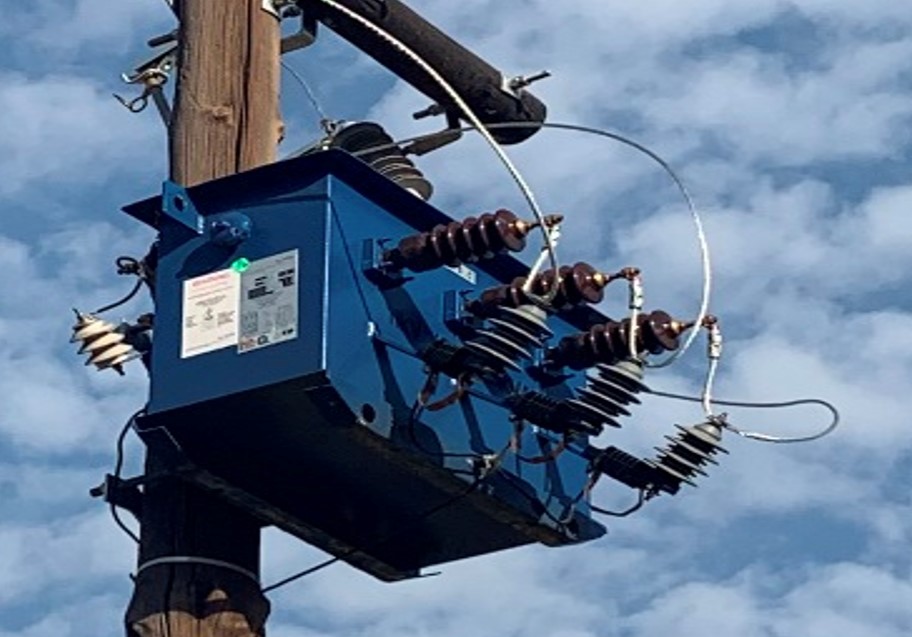Natural ester oil on Eskom distribution transformers
Eskom Holdings is a South African state owned electricity utility with generation, transmission and distribution divisions. There are over 6000 power transformers and over 400 000 distribution transformers deployed in the Eskom network. This article’s main focus is on the distribution transformers, which are of voltages below 33kV, with MVA ratings lower than 1.25MVA.


Corporate Specialist on Transformers and Reactors, Eskom, South Africa
Eskom transformers, just like most transformers in world, are mainly filled with mineral oil, which has been found to be more superior to other oils, especially on transformer operational requirements. This mineral oil usage accounts for over 99% of oils in Eskom transformers.
Over the years, the world has seen an appetite in use of alternative fluids, which amongst others were ester oils. These were introduced first in the 70s, but recent developments have seen implementation of ester oils, mainly for the environmental benefits it provides, with many other quoted benefits.
Eskom has watched the technology space and has done research work to establish possible implementation of other oils for Eskom specific needs. Natural esters were introduced on Eskom transformers in 2017, starting with distribution transformers.
Background on transformer oils
Transformer oils are used inside a transformer to provide insulation, cooling and as medium for condition monitoring.
These oils are subjected to heat, oxygen and moisture. When selecting transformer oils, properties that affect transformer performance, safety, health and environment become the fundamental criteria for acceptance.
Transformer oil properties which affect performance are;
- Dielectric breakdown strength, which is the ability of oil to withstand electrical stress, and is influenced by the presence of moisture and particulate material in the oil.
- Oxidation stability – the ability to withstand or the resistance of oil to formation of oxides, which form acids that are responsible for the degradation of cellulose material as well as the metal components inside the transformer
- Viscosity – which is the resistance of oil to flow under specified condition
The above properties determine whether oil remains chemically and electrically stable even under thermal stress. Transformer oil properties that affect safety, health and environment include:
- Flash Point – which is the temperature at which sufficient vapour is given off by the oil to cause combustion
- Biodegradability – the ability for oil to be converted to carbon dioxide, water by naturally occurring micro-organisms
These environmental properties determine whether oil will not cause harm to the environment, and in extreme situations to humans.
There are several different types of oils, however, for over a century now, mineral oils have been used on transformers to perform the mentioned functions of insulation, cooling and as medium for condition monitoring. Mineral oil was evaluated on the mentioned properties, with performance at the top of the evaluation list.
Several oil technologies have since been introduced in the transformer market and these have also been evaluated on the same criteria.
Eskom’s technology objectives
Eskom transformer engineers develop the transformer specification in order to achieve several outcomes, which include but not limited to;
- Acquiring transformers, transformer components included, that are fit for purpose and are reliable to the expected life.
- To support Eskom drive for low maintenance
- To reduce carbon footprint, with zero harm to the people and environment, and
- To minimise the total cost of ownership.
This philosophy is therefore applied to all components of the transformer when compiling a component specification and looking for better technologies.
Eskom fleet consist of over 6000 power transformers and over 400 000 distribution transformers. 99 % of the transformer fleet is filled with mineral oil. This oil technology has to date, the best properties towards oil performance as an insulating medium and as a coolant. Its lowlight is however the lower flashpoint and non-biodegradability.
The development on transformer oil technologies was then followed by Eskom engineers and natural esters, as one of the transformer oil technologies, were studied both in the laboratories and in the field.
Natural ester oils
Natural esters are produced from seed oils such as soy, rapeseed, sunflower etc.
Esters are known for their biodegradability as they show low oral toxicity and non-toxic to aquatic life. They also show a lower fire hazard than mineral oil due to higher flashpoint and fire point. Due to high viscosity, esters are recommended for use in sealed applications.
In 2017, Eskom introduced natural esters for use in distribution transformers (<1.25MVA, <33kV). It must be noted that these distribution transformers are located in residential areas, where fire explosions could endanger not only electrical apparatus, but human lives as well. These residential areas also include informal settlement, where illegal connections are on the rise, thus resulting to an overloading of the same transformers. This in turn increase the number of failures on this transformer, and the risk of transformer fires. Figure 1 shows an explosion of a transformer which is located in a residential area, with a shack built right next to the mini substation.

Figure 1- Mini substation fire caused by transformer overloading [4]
Based on the above, and several studies conducted to prove this technology beneficial to the Eskom distribution environment, natural esters were then adopted for use in these transformers because they are hermetically sealed and therefore oxidation not a risk. Also, when looking at the properties of oil as previously discussed, the use of ester oils came with safety and environmental benefits such as less fire hazard (high flashpoint), and biodegradability.
Other important aspects
When the decision to utilise ester oils on distribution was reached, the transformer manufacturers had to be engaged and process put in place to ensure that the new oil is catered for in the manufacturing process. One of the processes in a procurement of transformers, which Eskom engineers are involved in, is that of a design review. This is done to ensure that the transformer design is aligned to Eskom requirements as per specification, and to evaluate areas where the design can be optimised, while ensuring a reliable and safe transformer is delivered for use in the Eskom network.
Over 30 different distribution transformer categories (voltage and power) were reviewed and approved for natural ester oil. This resulted in over 400 ester oil filled transformer undergoing a full transformer manufacturing process, and tested according to IEC/SANS 60076 requirements and passing the same. These have since been in service and operating as required. Natural ester oil filled transformers are uniquely identified by a blue colour, compared to the avocado colour used for the mineral oil filled transformer.

Figure 2 - Distribution transformer filled with ester oil. The blue colour is to distinguish ester oil filled transformers from the mineral oil filled ones
Conclusion
Natural esters on transformer have been on the market for decades now. Eskom has introduced the use of natural esters first on distribution transformers. The next step is to evaluate further benefits on power transformers and either introduce this technology or any other oil technology that will answer Eskom transformer operational challenges.
References
- Eskom specification for mineral insulating oils – 240-75661431
- The J & P Transformer Book, Twelfth edition, A Practical Technology of the Power Transformer by Martin J. Heathcote
- A2-305 - Design of 154kV power transformer using natural ester oil. B. H. Bae, et al
- Source Figure 1: https://www.sowetanlive.co.za/news/south-africa/2020-06-16-mini-substation-in-alexandra-blows-up-leading-to-electricity-outage/
Illustration credit: Banner & thumbnail by LoveTheWind on iStock

